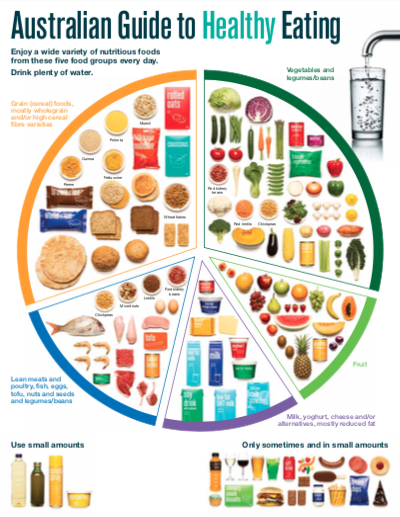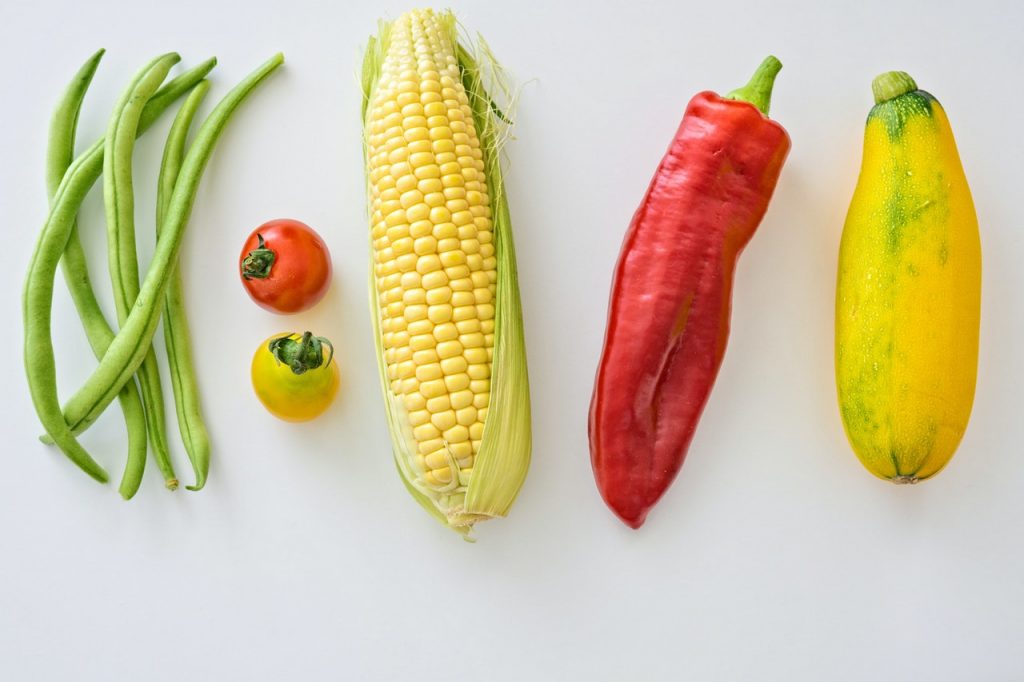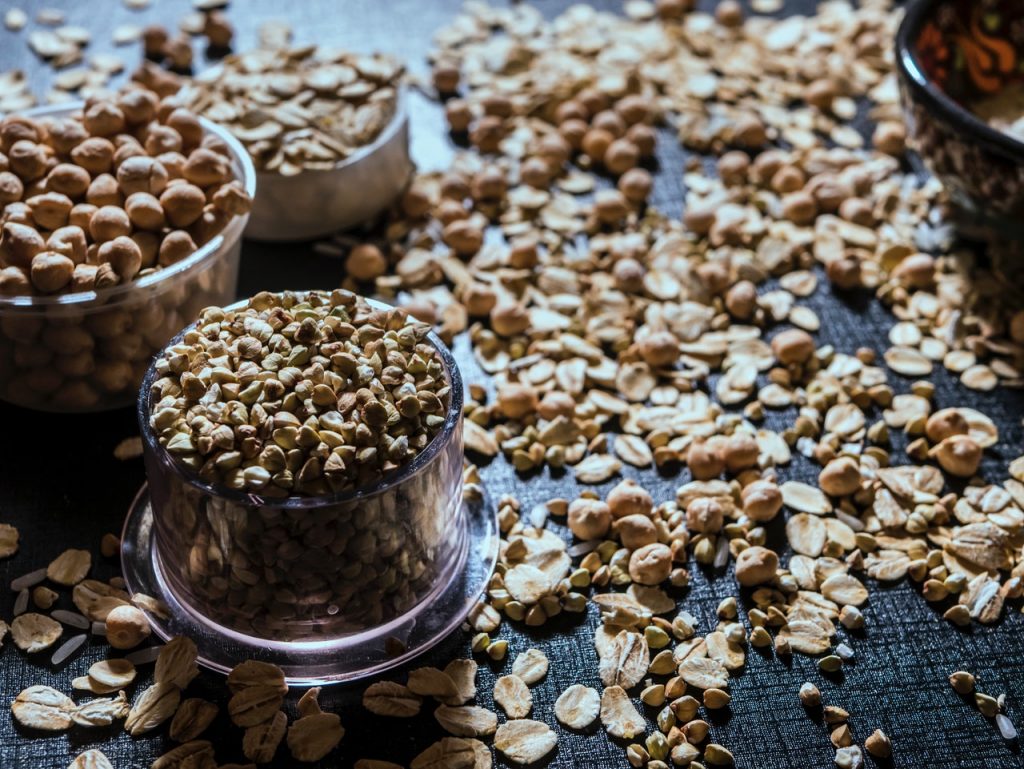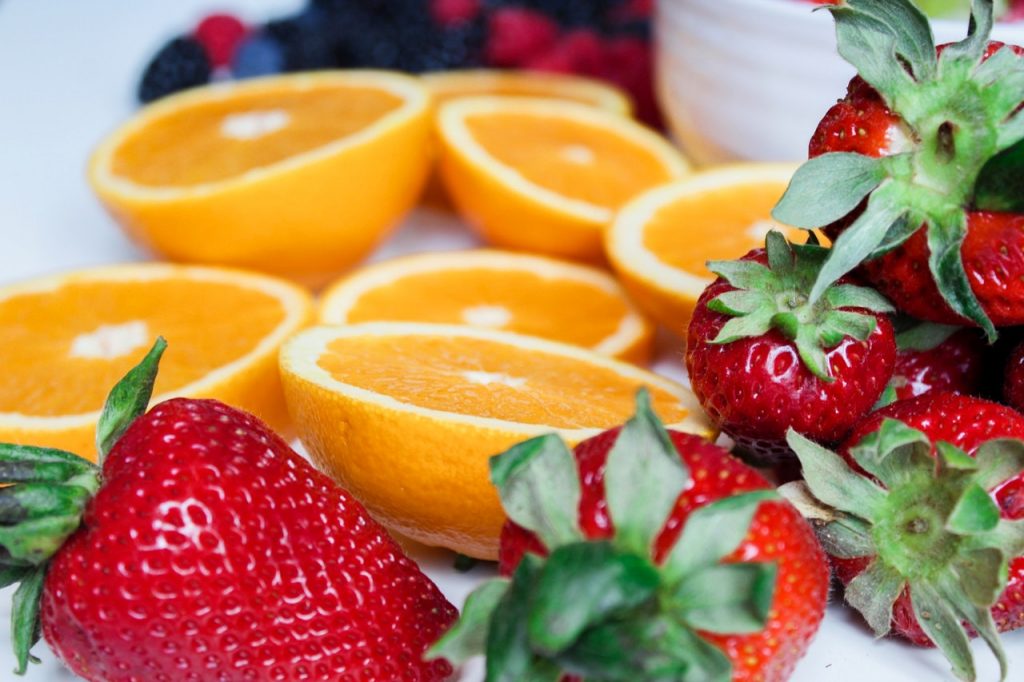A balanced diet is the most important aspect of a healthy lifestyle. Doctors and dieticians recommend eating foods with a high vitamin and mineral content. The nutritional value of different food products places them in one of five different food groups. Which of these food groups should we be focusing on, and how much of each should we be having in order to be healthy? We’ll explain everything you need to know about the top 5 food groups in this article.
Why are there 5 food groups?
Many of us associate a diet with weight loss, fasting, and food restrictions. But a healthy diet simply means eating foods that contain the nutrients we need for healthy living. When planning our diet, we consider nutritional value and go for foods that don’t just give our body empty calories, but the necessary ingredients to help our body grow and function properly.
To help plan a balanced diet, nutritionists and doctors all over the world recommend different types of food we should eat. In Australia, you can follow the Australian Dietary Guidelines, which have information about types and amounts of foods, food groups, and dietary patterns that aim to promote health and wellbeing, reduce the risk of diet-related conditions, and reduce the risk of chronic diseases.
The Australian Dietary Guidelines are used by health professionals, policymakers, educators, food manufacturers, food retailers and researchers, to help them find ways to help Australians eat healthy diets.
The Australian Dietary Guidelines apply to all healthy Australians, as well as those with common health conditions such as being overweight. They do not apply to people who need special dietary advice for a medical condition or to the frail elderly.
What are the top 5 food groups?
When we talk about a healthy well-balanced diet, we mean one that includes a variety of nutritious foods from each of the top 5 food groups, everyday. According to the Australian Dietary Guidelines, the top 5 food groups are:
- Vegetables, including different types and colours, and legumes/beans,
- Fruit,
- Grain (cereal) foods, mostly wholegrain and/or high cereal fibre varieties, such as bread, cereals, rice, pasta, noodles, polenta, couscous, oats, quinoa and barley,
- Lean meats and poultry, fish, eggs, tofu, nuts and seeds, and legumes/beans,
- Milk, yoghurt, cheese and/or their alternatives, mostly reduced fat (reduced-fat milk is not suitable for children under the age of 2 years).
A well-balanced diet should consist of foods from each of these groups. There are also guidelines about the amounts of each food product needed in our everyday diet.
According to the guidelines, our daily meals should have large amounts of vegetables and legumes, together with whole grain products followed by lean meats, tofu, nuts and seeds and good amounts of fruit. We should also implement some dairy products and/ or their alternatives.

We should remember that in addition to eating well, we also need to drink enough water and be active. Scientists have concluded that no diet, even the healthiest one, will bring results while leading a lazy lifestyle.
Why is exercise so important to health? First of all, because daily movement significantly improves overall fitness and well-being. People who exercise regularly (lift weights or run on a treadmill) are less likely to be tired and have better concentration than people who do not play sports.
Let’s look closely at the top 5 food groups that should be on our plates every day.
1. Vegetables and legumes/beans.
There are many reasons why vegetables and legumes are a major component of a well-balanced diet. They are full of nutrients, low on calories, and great sources of minerals, vitamins and dietary fibre. For those reasons, they should appear on our plates more than once a day.
Legumes and beans are a part of this group for a reason – they’re the second-largest plant based food source in the world. Legume seeds are valued for their high protein content, which ranges from 20-40% depending on their type. Because of this, legumes are used as a healthy replacement for meat in a vegetarian and vegan diet. Eating legumes and beans is recommended by nutritionists and the United Nations Food and Agriculture Organisation. Legumes are also rich in valuable substances like iron, magnesium, phosphorus, calcium, potassium, iodine, polyunsaturated fatty acids, B vitamins, antioxidants, phytoestrogens.
To make sure you’re getting the most nutrients out of your vegetables, you should know how to cook and eat them in the right way. Here are some things to remember when preparing your veggies and legumes:
- Vegetable peels are precious. Fresh veggies, with the peels still on, have the highest nutritional value. This is how we should eat most of them, especially during harvest. Unfortunately, when we wash and peel our vegetables we remove some of their valuable ingredients – most of which are in the skin. So if you can’t eat your veggies with the skin on, then try to peel them as thinly as possible to retain the most nutrients.
- Rinse your veggies quickly. If you’re rinsing vegetables that are already peeled, try to wash them as little as possible. Too much water can wash out minerals and vitamins from vegetables that lack their natural skin protection. If you’re shredding vegetables, try to do it just before consumption. Store ready-made salads and homemade salads in containers, to limit exposure to light and oxygen and protect against vitamin oxidation.
- Season veggies just before serving. Seasoning too early causes the juices to leak, and many nutrients with it.
- Cook your vegetables gently. Not all vegetables can be eaten raw. Some require thermal processing – roasting, frying, or stewing for example. Unfortunately, each of these thermal processes is associated with reduced nutritional value of the veggies. Frying also enriches vegetables with fat, increasing their calorific value. Exposure to high temperatures causes many changes in plant tissue, such as the so-called glycemic index, which determines the rate of increase in blood sugar (glucose) after consuming a given product. Knowing all this, how can you maintain vegetables’ highest nutritional value when cooking? Toss them in a small amount of boiling, lightly salted water. Cook them for as short as possible so that they are only slightly softened. Afterwards you can save the water and use it for soups and sauces. Make sure to cook your vegetables with a lid on, protecting from oxygen exposure which destroys vitamins. Steamed vegetables retain the most minerals, aromas and flavours.
- Put frozen vegetables directly in boiling water without defrosting. Large amounts of raw vegetables rich in dietary fibre and served with the skin are not recommended for people on a digestible diet (e.g. in inflammation of the gastric and intestinal mucosa, excessive irritability of the large intestine, infections with fever or in the elderly). It is worth consulting a doctor or a dietitian about the preparation of vegetables.

2. Grains, mostly wholegrain and/or high cereal fibre varieties
Grains are another top 5 food group we should eat and a valuable source of many different nutrients. Including them in your daily diet is very simple and brings a lot of health benefits. Grains and cereal varieties can be important sources of minerals and vitamins, though this mainly applies to wholegrain and low-processed products.
A well-balanced diet should include three servings of whole grains daily. What are the top benefits of implementing wholegrain products in our diet?
- Improve digestive tract function. Grains contain a lot of fibre, which helps our intestines work better. The more fibre, the better the intestinal peristalsis and the less bloating. Fibre is also a necessary substance for weight loss due to its cleansing properties. Check out more information about fibre here: The Truth About Fibre In Your Diet And Which Foods Are High In Fibre.
- Great source of Vitamins. Grains, especially whole grains, are rich in B vitamins, vitamin E, and minerals such as selenium, zinc, copper, magnesium, iron and phosphorus. Because of these components, eating enough whole grains everyday will help to strengthen our heart and improve the condition of our hair, skin, and nails. Wholegrains also contain phytoestrogens which protect the human body against cancer (especially colorectal cancer) and cardiovascular diseases, including varicose veins and haemorrhoids.
- Regulate blood sugar levels. Consuming grains helps to prevent the risk of diabetes, by maintaining healthy blood sugar levels and reducing tissue sensitivity to insulin. As a result, there is lower risk of stroke and type II diabetes.
- Reduce fat and cholesterol absorption. Eating grains, especially whole grains, lowers the risk of heart disease. Some studies show that people who eat at least one serving of whole-grain cereal products a day have a lower risk of dying from coronary heart disease than those who rarely eat whole grains. In some studies, the risk is even reduced by 30%. This food group is very important to our health, however to take advantage of its benefits we need to remember that not all grains are healthy. We should be well informed about which products are healthy for our body and which to avoid. Here are some ideas on how to implement healthy grains into your diet.
- Always check labels of food products. Not all products are as healthy as what the front packaging claims. Nowadays, many processed foods contain white flour with purified inner parts of the grain, which are a source of carbohydrates and protein. In doing so, all the benefits of eating grains are stripped off as a result of many grinding operations. As a result, they no longer offer the benefits of protein, polyunsaturated fatty acids, calcium, iron, potassium, phosphorus, 2 to 15 times B vitamins and various phytonutrients. Many times you’ll find darker breads promoted as the healthier option, but this still may not be made from whole grain. Producers regularly add colouring substances, such as caramel, to ‘healthier’ breads. Real wholemeal bread is usually quite moist and loamy and heavier, and isn’t very dark. It is important to read the labels and check for food additives which can impede on the health benefits of a product. Read more about food additives here: Additives Most Likely To Cause Adverse Reactions.
- Add whole grain flour to your meals. Whole grains are the most beneficial from this group, with high amounts of fibre. That’s why we should implement them in our everyday diet. You can do this by adding whole grain flour to omelettes, pancakes, or cakes. You can also eat bran and oatmeal, rye and wheat flakes with milk, yoghurt, and fruit, or add them to cottage cheese, salads, or sprinkle over vegetables.
- Not all breakfast cereal is healthy. When buying wholegrain cereals in the supermarket, you need to make sure to always check their labels. In many cases, wholegrain breakfast food products contain significant amounts of sugar, which is not too beneficial for our health.
- Choose whole grain pasta and brown rice. When preparing meals for you and your family, choose healthier options like wholegrain pasta and brown rice. They might take a little bit longer to cook, but they carry many more nutrients than the white options. Boil them in a little water until all the liquid has been absorbed, and be careful not to overcook them. When buying pasta products, look for these ingredients in their compositions: wholemeal flour, graham flour, flour type 1850, 2000, containing bran, brown rice, durum wheat, semolina.
- High-fibre diet is not for everyone. Remember that consuming significant amounts of high-fibre products is not recommended for people, such as those with intestinal diseases. Such a diet also involves the need to increase the consumption of, especially calcium and iron, by nearly 10% due to the limited absorption of minerals.

3. Fruits
Fruits are one of the most favourite of the 5 food groups. We can eat them raw, dried, use them for making delicious juices or smoothies or add them to cakes, sweets and salads. Additionally, fruits play a very important role in human nutrition. They are an excellent source of minerals, vitamins, and dietary fibre. Fruits contain antioxidants like vitamin A, vitamin C and vitamin E, as well as flavonoids that remove free radicals formed in the body. The fruit is also a source of salutary acids that can regenerate and rejuvenate the skin. What other important benefits do fruits have?
- Help with hydration of our body. We all need enough water in our body, and it doesn’t necessarily have to be supplied by drinking it. The amount of water you need will depend on your height, body weight, nutritional status, physiological condition, and so on. Consuming fruits such as watermelon, melon or citrus can provide a certain amount of water. You’ll also be getting the minerals contained in the fruit, which will help with your body’s electrolyte balance which plays a large role, especially during periods of dehydration e.g. from sweating or high temperatures.
- Fruits for a healthy heart. Fruits are not only full of vitamins and fibre but also contain important minerals. Kiwi, banana or pineapple are perfect sources of potassium, which is necessary for the proper electrolyte balance of the body and affects the proper functioning of the heart.
- Reduce the risk of cancer. Fruits are full of antioxidants which help to strengthen our immune system and reduce the risk of cancer, cardiovascular disease, joint disease, diabetes and vision problems. They also increase the body’s resistance to infections and help to keep skin looking youthful for longer. As it turns out, the time that you eat fruits is also important. There are also a few other rules that will make eating fruit beneficial. Here are the most important:
- Eat fruit by itself. It is very important, if not the most important, to eat fruit as an independent meal. It shouldn’t be treated as a snack to put in sandwiches, an ingredient for cakes or salads, but as a separate dish. Our body needs various enzymes to break down the simple sugars found in fruits and absorb the fibre and nutrient content. Because fruit is so easy to digest, this process happens quickly and requires the digestive system to be fully involved to maximise the benefits of the fruit being eaten. But if the stomach also contains proteins, fats, and complex carbohydrates together with fruit, this digestive mechanism is disturbed. The undigested food portion begins to rot in the gut, causing nausea, heartburn, gas, and gas. Prolonged experience of this this type of fermentation can lead to disorders of the entire digestive system.
- Only choose natural fruit products or prepare them yourself. When buying fruit products, pay attention to their ingredients. The best choice will be natural, fresh juices or mousses and purees without added sugar or sweeteners. It’s also worth reaching for products with a short shelf-life – one and two-day juices, freshly squeezed. The best way to avoid high amounts of sugars and other additives is to prepare juices and other fruit products on our own. This way you will know that it’s a good and healthy product.
- Eat fruit on an empty stomach. If you eat fruit on its own, 2 or 3 hours after your last meal, then you give your body the chance to fully utilise its health and nutritional properties. The fruit will be fully digested, beneficial substances absorbed, and undigested remains easily excreted, accelerating your metabolism.

4. Lean meats and poultry, fish, eggs, tofu, nuts and seeds, and legumes/beans
This is another popular member of the 5 food groups, lean meat and poultry. We need to remember, however, that because of their high fat content we shouldn’t limit this diet to just meat products. That’s why the food group also contains other products like tofu, nuts, seeds and legumes, a great vegetarian alternative to meat. Here are the top benefits of eating products from this group:
- Great source of protein and iron. Lean meat is the most protein-rich, which is why nutritionists recommend it to be a regular part of your diet. You can also find protein in eggs, and beans. The daily protein requirement is approximately 1g for every kilogram of body weight. Protein is essential for the body to function properly, as is iron. Children and adolescents, as well as pregnant women, nursing mothers and menstruating women, are at risk of iron deficiency. Find out more about iron in you diet..
- Foods with high amounts of zinc. Another important nutrient in meat and products from this group is zinc. Beef contains the largest amount of zinc, with ass much as 3.8 mg in 100 g. Nuts and beans are another great source of zinc, and good meat alternatives for vegetarians.
- Great source of Vitamin B. The nutritional values of meats and other food products from this group are primarily B vitamins – which play an important role in the human body being responsible for the proper functioning of the nervous system. They affect metabolic processes by helping absorb carbohydrates, alleviating the state of nervous tension, and improving brain function.

5. Milk, yoghurt, cheese and/or their alternatives
For years, milk and dairy products have been on the top of the 5 food groups. With time, however, we have learned that there are some disadvantages to consuming cow’s milk due to its high fat content. That said, there are many alternatives to dairy products that we can consume.
Products from this food group have many important benefits for our health:
- Rich source of calcium. The highest amounts of calcium can be found in milk and dairy products. But you can also find large amounts of calcium in soy, almond and rice milk, as an alternative for a vegan diet. Calcium is very important for the health of our bones. Products with high calcium content are most suitable for children who are still growing and for the elderly, especially women who are at risk of osteoporosis. Consuming milk and milk products is an important supplement in the daily diet.
- Rich in lipids. These are extremely important for the skin, protecting against water evaporation and adverse environmental stressors, such as the wind, cold or sun.
- Help reduce blood pressure. Regular consumption of dairy products can reduce the risk of developing metabolic syndrome. They also help reduce blood pressure and the level of triglycerides in the body. Additionally, they benefit the digestive system – especially fermented milk drinks, which are considered natural probiotics. They protect the mucous membranes of the digestive tract by supporting the bacteria that live in their lumen.
- Help to maintain a healthy body weight. Consuming products from this group can help us keep a slim figure and low BMI. Maintaining a healthy body weight is partly related to the probiotic effect of some products from this group.
Remember that dairy products contain lactose, and many people with lactose intolerance aren’t able to add these products to their diet. This food group has many alternatives that have high nutritional value and do not contain lactose i.e., soy milk products, almond milk products etc.
You should also know that when consuming dairy products, try to limit their amounts due to the high fat content. This is why we shouldn’t eat large amounts of cheese or butter. The best way is to choose plant-based alternatives.
When buying products from this group, you should also pay attention to their components. Try to buy dairy products without the addition of preservatives, dyes or flavour enhancers, and go for ones that don’t have too much fat content. Excessive fat consumption contributes to the development of many civilisation diseases, deterioration of the skin, and weight problems.

Which food products should we avoid?
Top 5 food groups gained their space on the list of recommended products for their valuable nutrition benefits. We can see that there are some foods that we all know and eat often, however, they do not belong to any of these groups. It is because in some cases eating them in small amounts won’t harm our health, however, when consumed in larger amounts, they can be bad for us:
- Sweets. We all love them, but because of their high sugar content, the best idea is to exclude them from our diet altogether. We can still enjoy the sweet taste by eating healthy fruits or using healthier alternatives. Instead of sweetened cereals from the supermarket, you can choose porridge with natural yoghurt and fruit. We should also avoid drinking sweetened sodas. A glass of water or freshly squeezed juice will be much better options.
- Salt. This is the most common element of our cooking, adding flavour to our meals, but when used in excess it can cause some health problems. Salt retains water in the body, making the arteries too “full” and increasing blood pressure. It is already known that significantly reducing daily intake of sodium lowers blood pressure, the risk of developing cardiovascular diseases, and the risk of death due to these diseases by five times. Using too much salt can also overload the kidneys.
- Red Meat. According to many nutritionists, we need meat, but not all of it in small amounts. Meat is a great source of protein and iron, but it also contains a lot more fat than white meat, and what’s more, it is mostly a saturated fatty acid, which is not good for the body. Saturated fatty acids, when consumed in large amounts, cause atherosclerotic lesions that can lead to a heart attack or a stroke. Statistics confirm that people who eat a lot of beef and pork are more likely to suffer from cardiovascular diseases, metabolic diseases and cancers (mainly of the anus and colon).
- Processed foods. Ready-to-eat meals and fast food are the options we all like, and are acceptable from time to time, but eating these kinds of meals too often may cause health problems. Most of the time, processed foods contain harmful additives like food colouring and flavour enhancers. Fast foods are also high in saturated fat and cholesterol. Find out more about foods high in cholesterol. The best way is to avoid highly processed foods in our diet. Instead, you can prepare your own delicious version of these meals using healthy ingredients, and know exactly what’s on your plates.


I’m lactose intolerant, so, I try to stay away from any dairy. Any dairy alternatives you can suggest for people like me?
I read this article completely regarding the difference of most up-to-date and preceding technologies,
it’s awesome article.